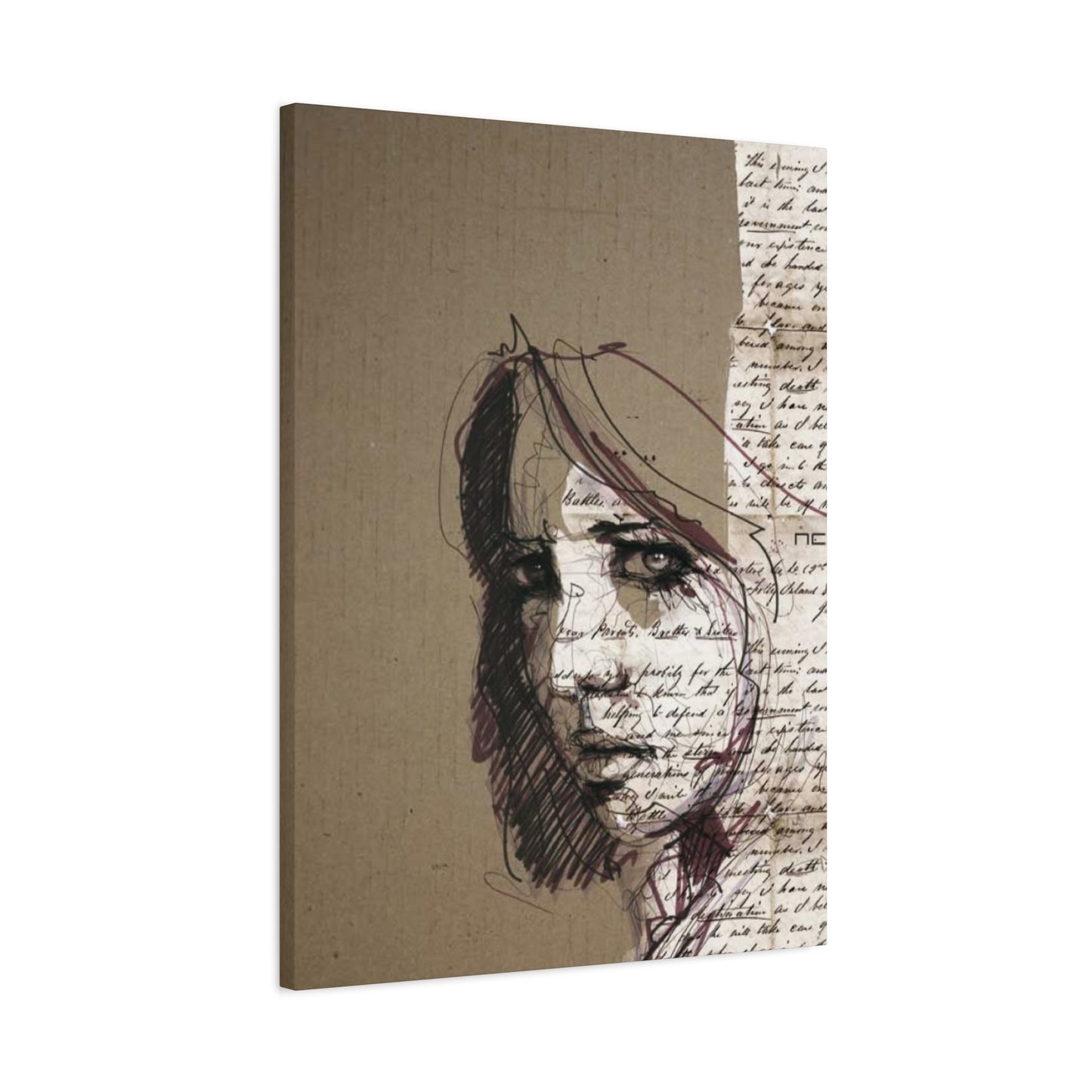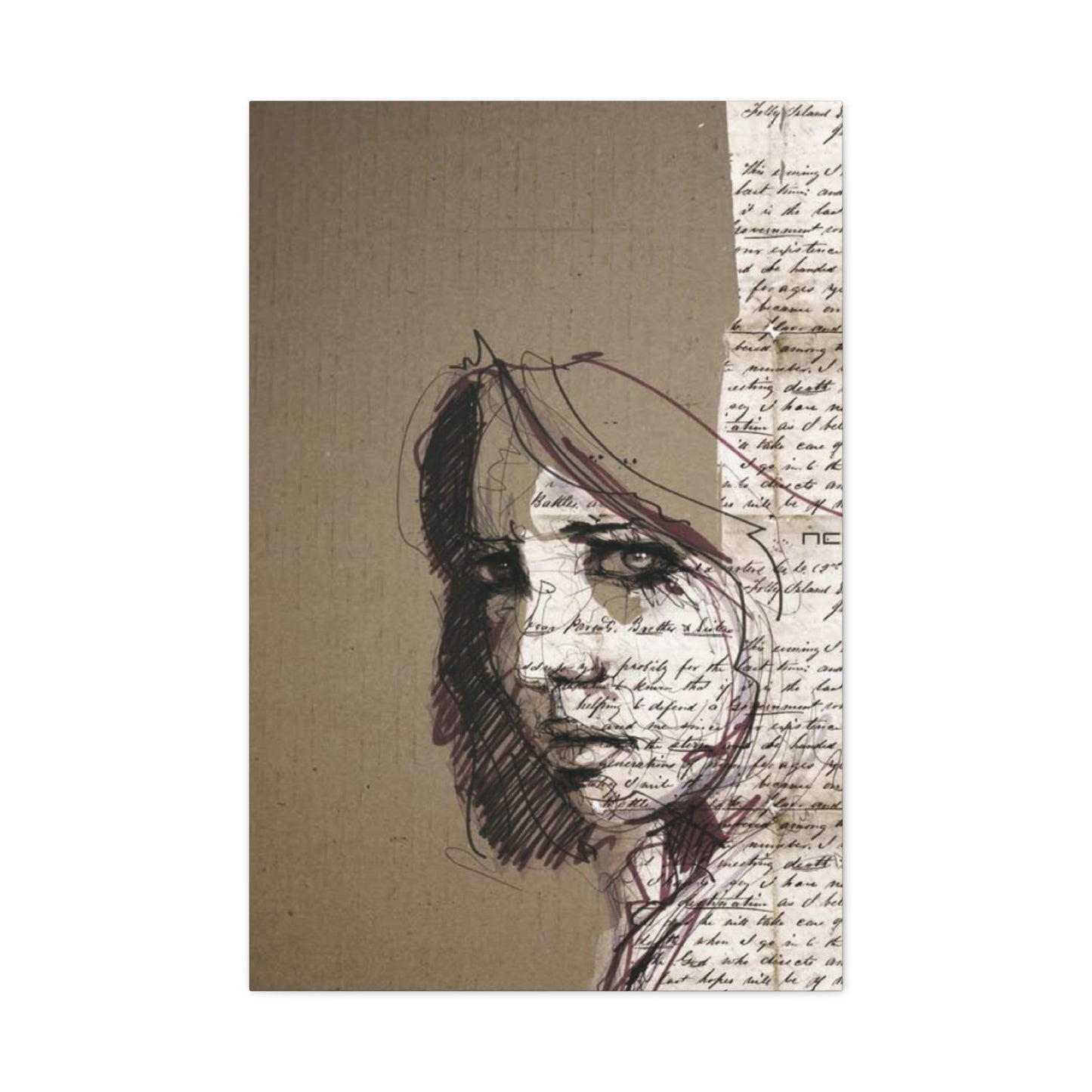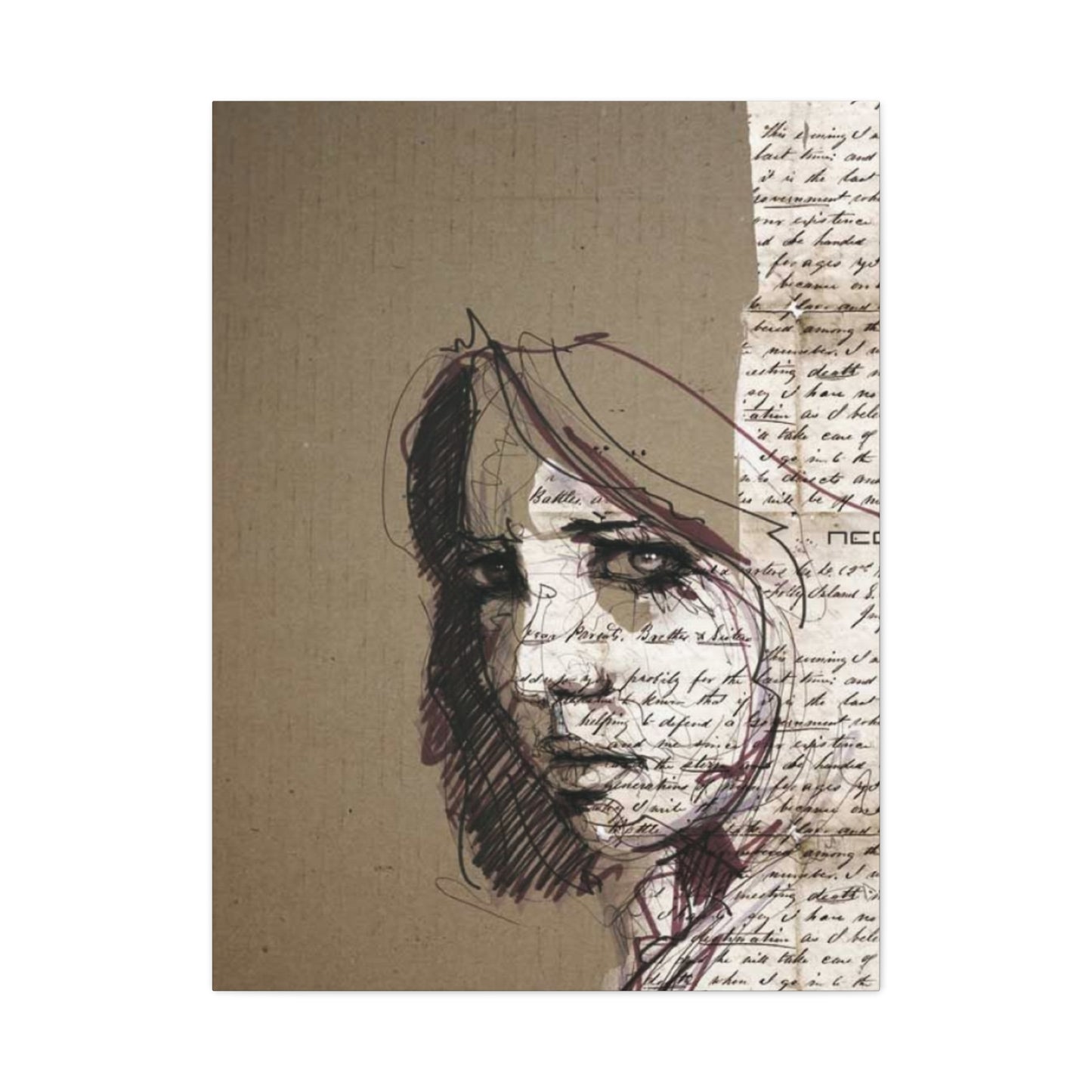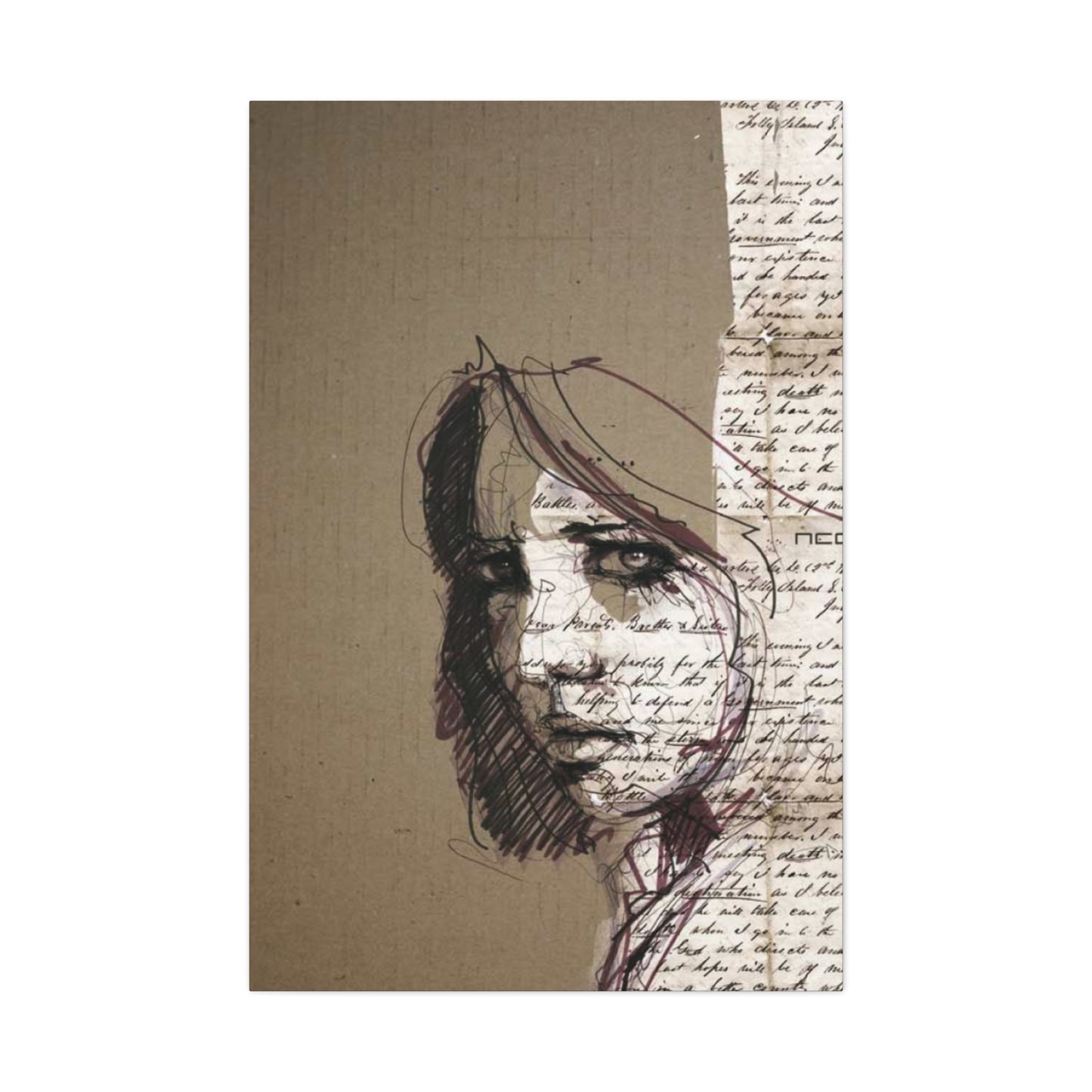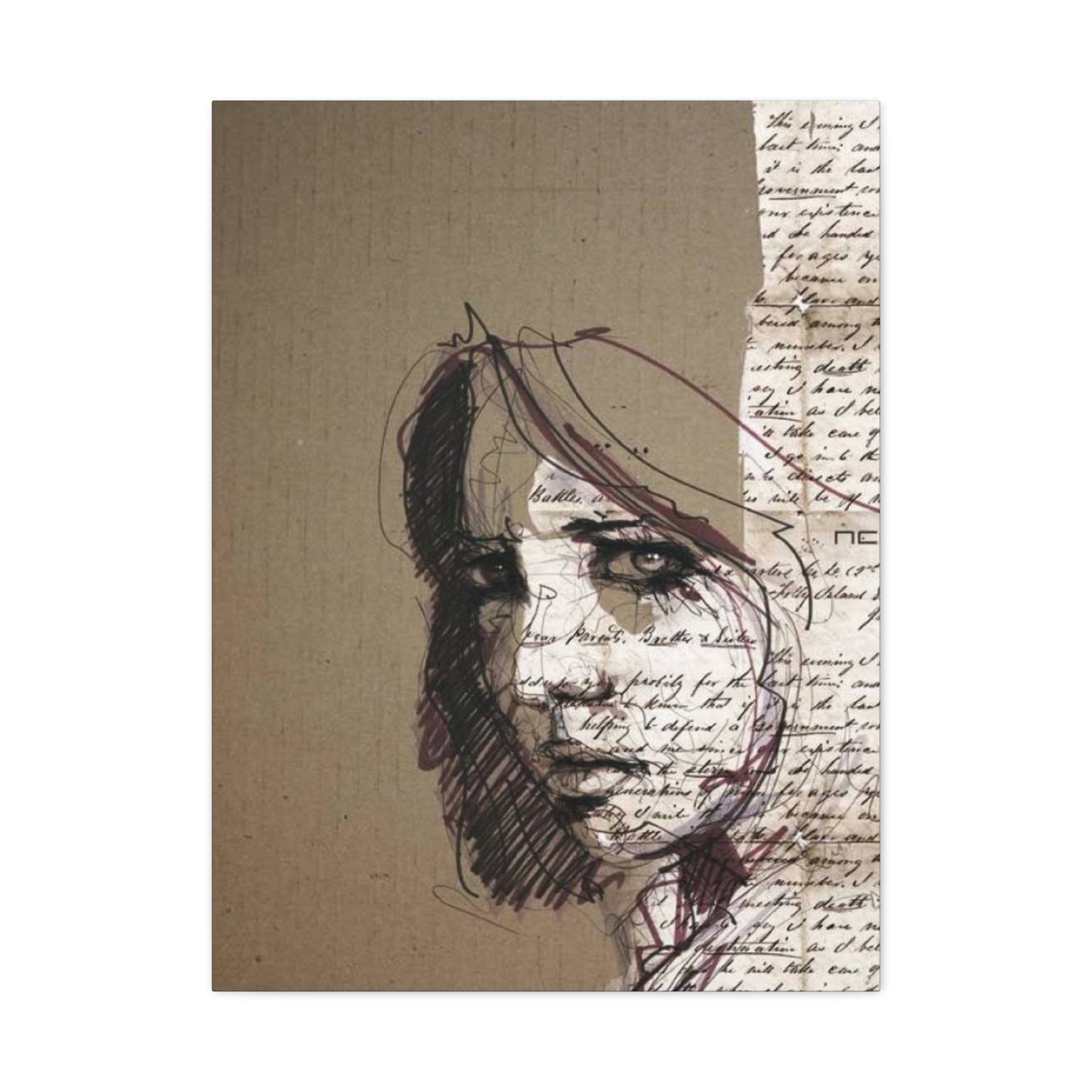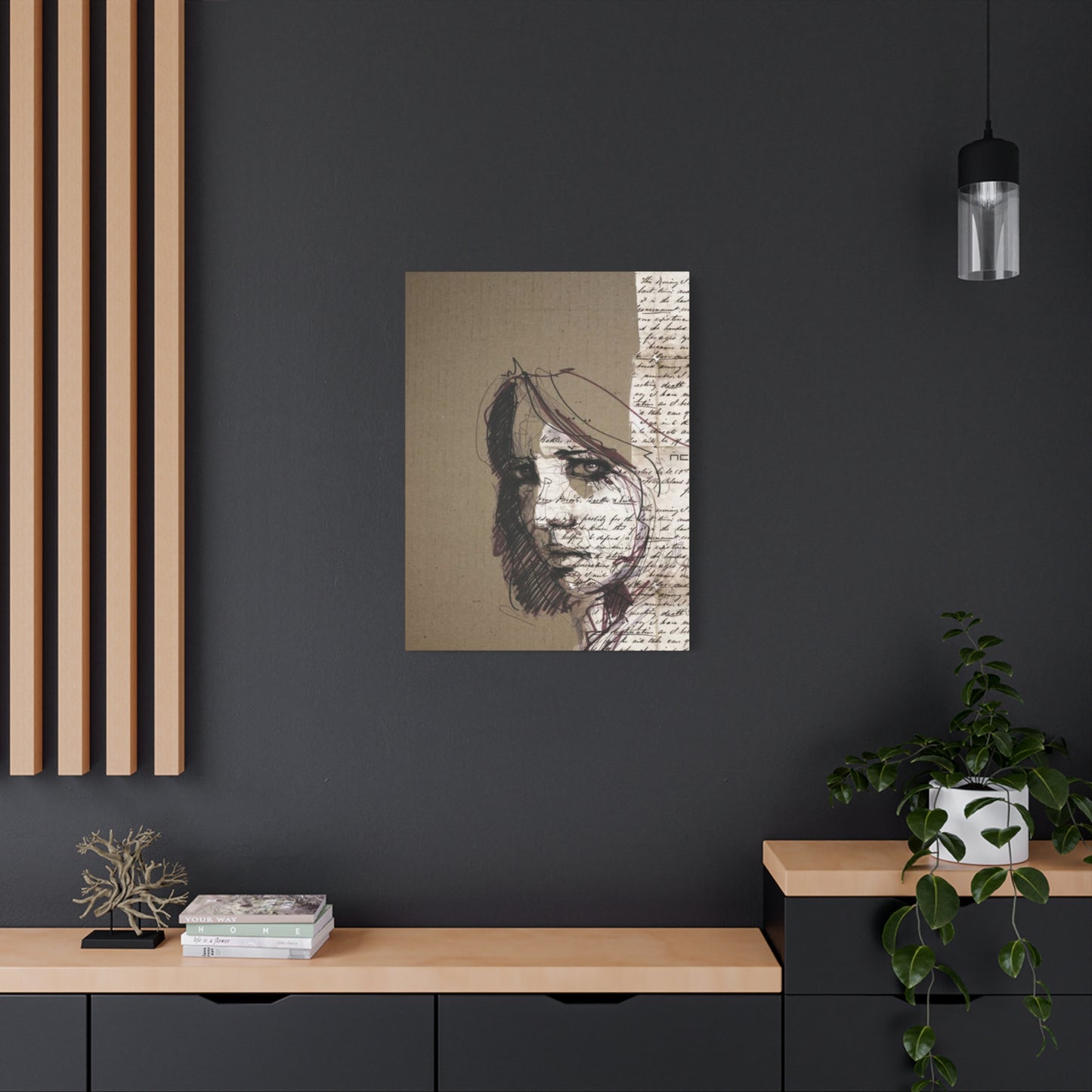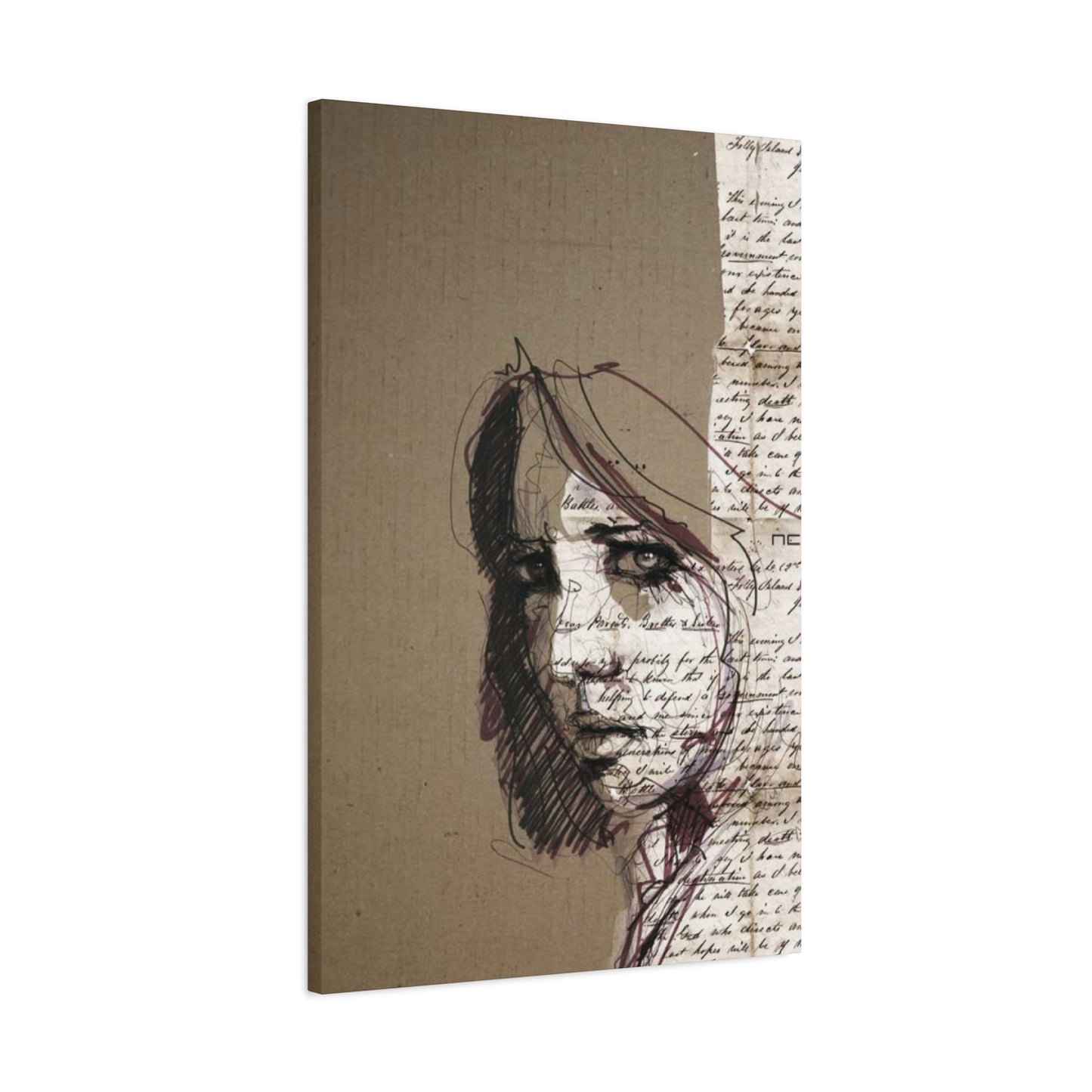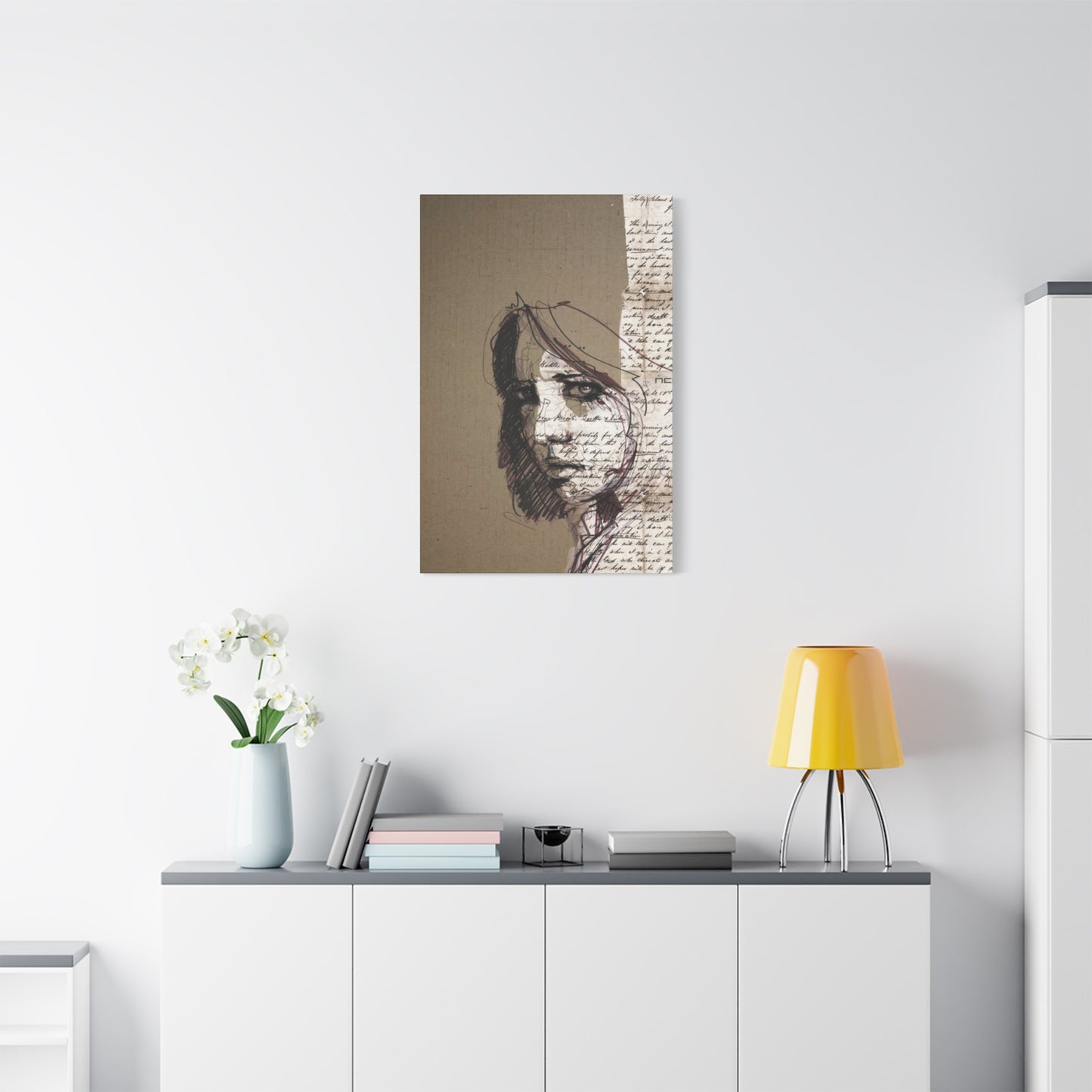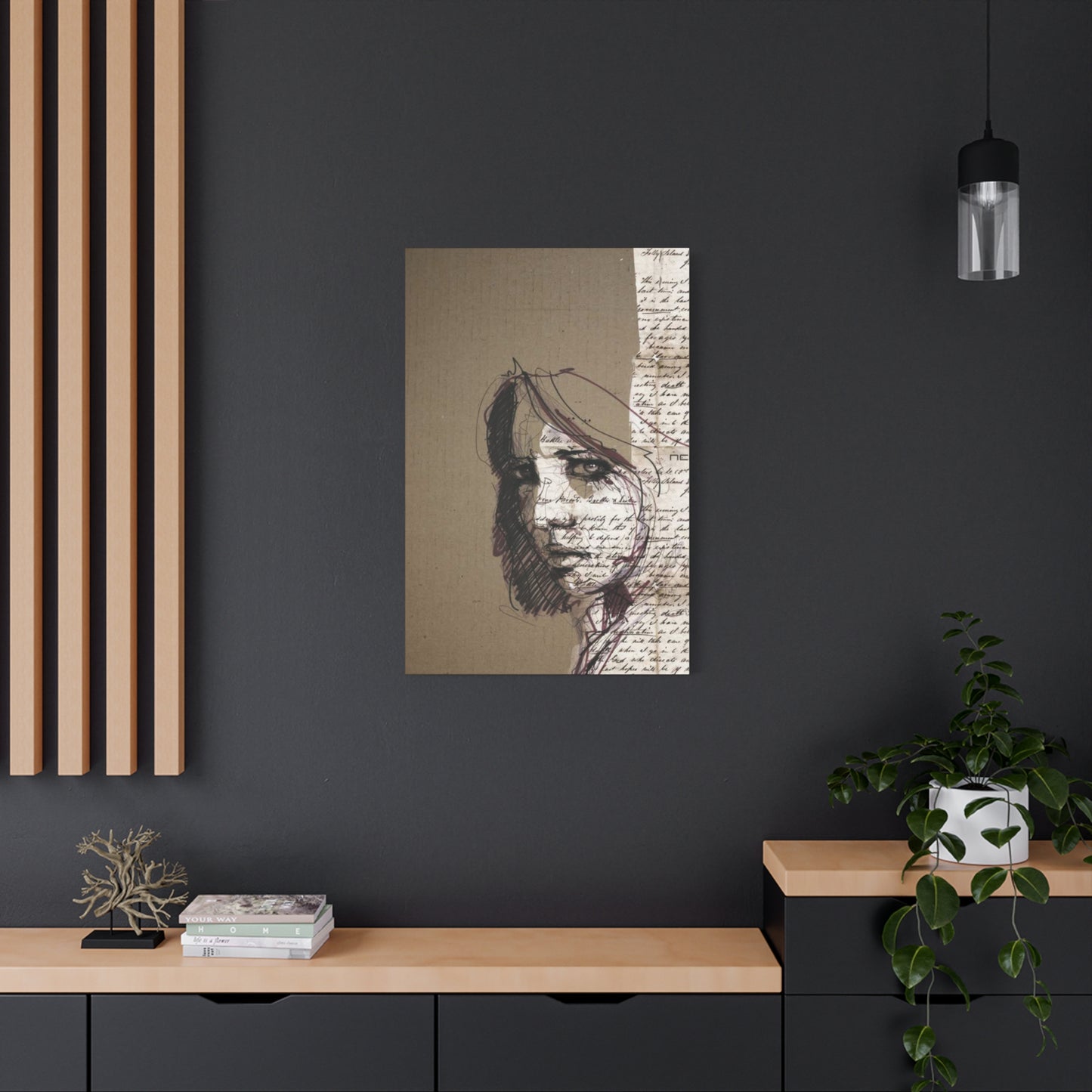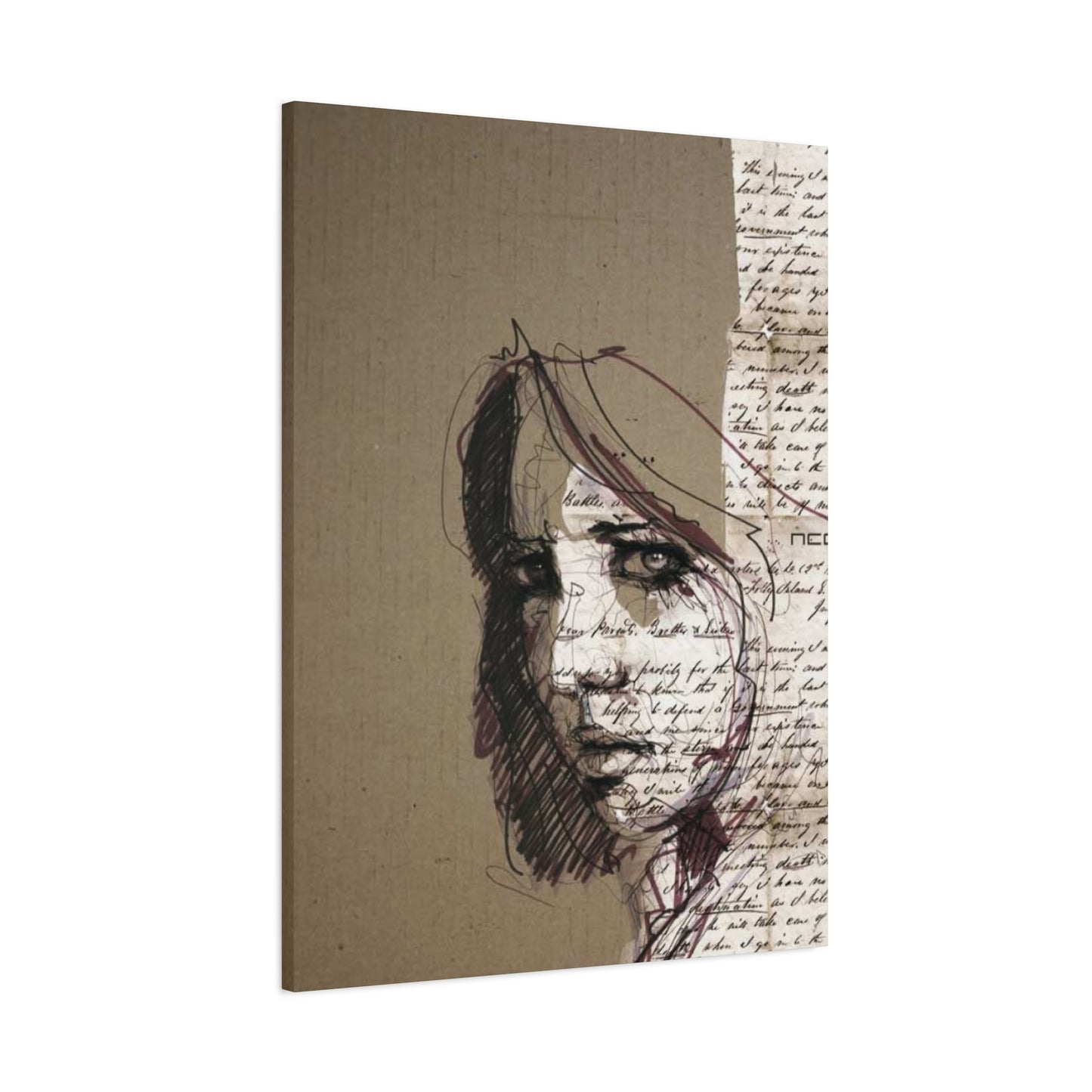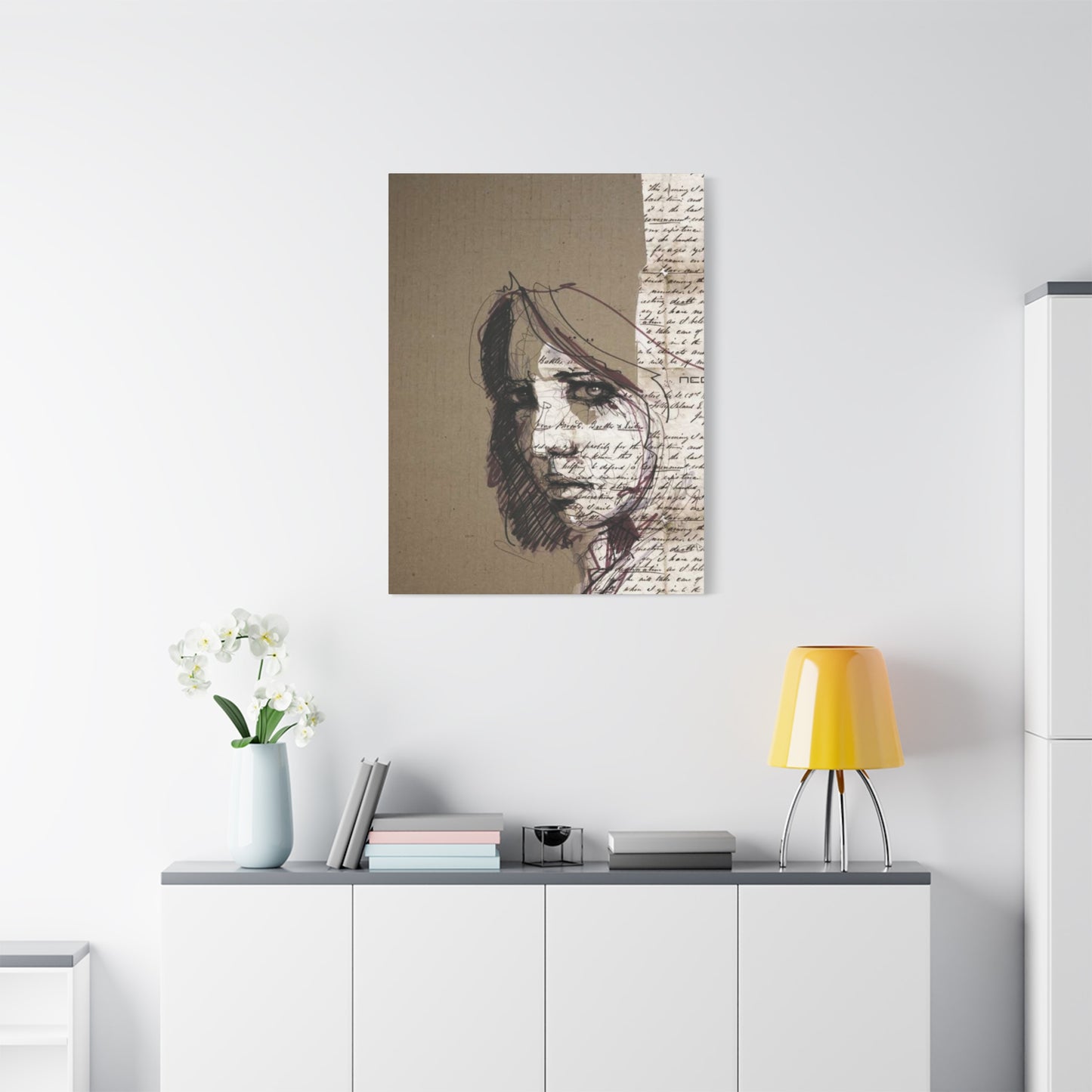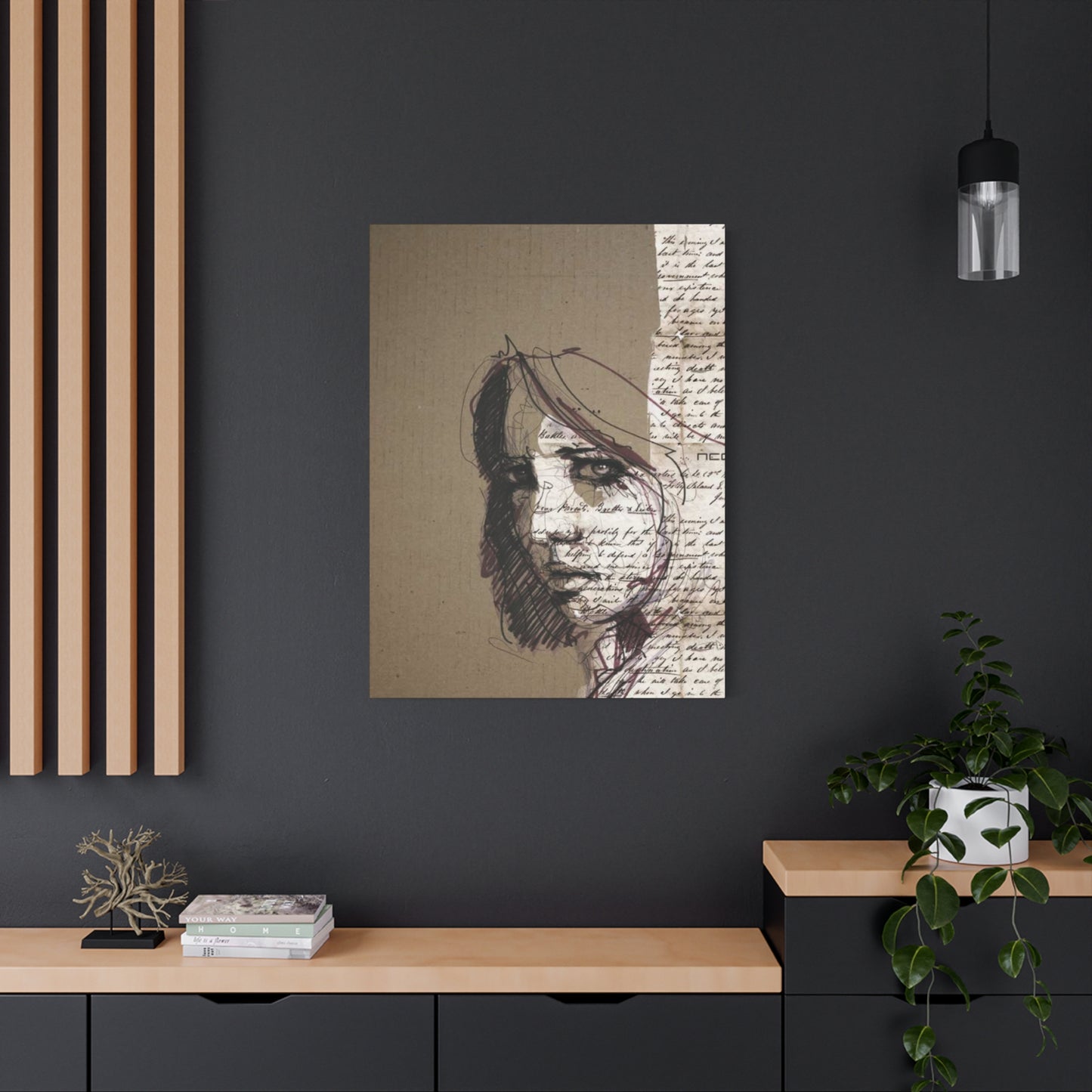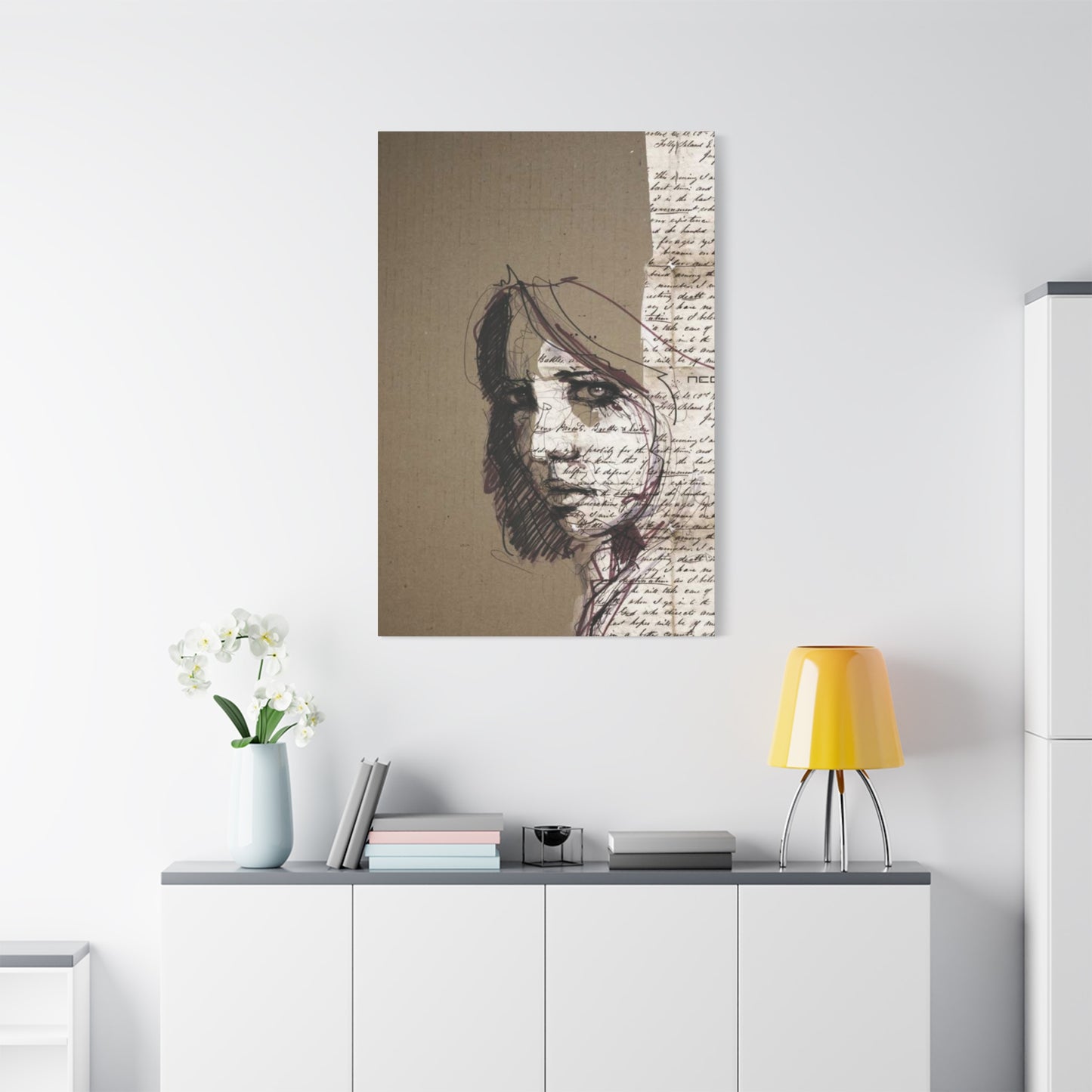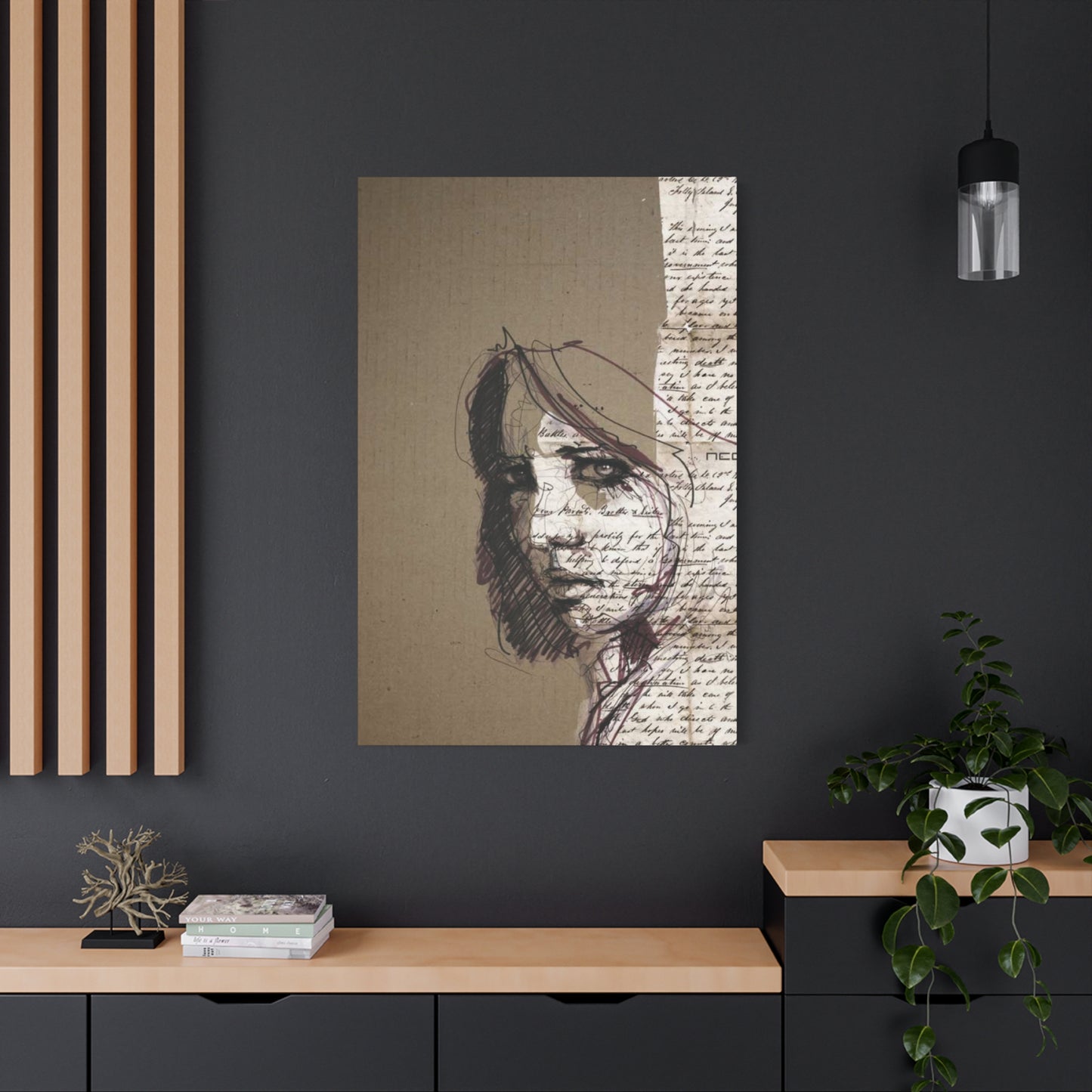Elevate Your Space with Abstract Short Hair Girl Paintings and Mixed Media Wall Art
The world of contemporary art has witnessed a remarkable evolution in how artists capture human essence through abstract interpretations. Among the most captivating subjects in modern artistic expression is the portrayal of feminine beauty through minimalist yet powerful imagery. The representation of women with cropped hairstyles in abstract form has become a significant movement in contemporary wall decoration, blending traditional painting techniques with innovative mixed media approaches. This artistic style resonates deeply with modern sensibilities, offering viewers a fresh perspective on portraiture that transcends conventional boundaries. The combination of abstract elements with recognizable human features creates a visual language that speaks to both emotion and aesthetic appreciation.
Canvas prints featuring abstract depictions of women with short hairstyles have emerged as a dominant trend in interior design circles. These artworks serve multiple purposes beyond mere decoration, functioning as conversation starters, emotional anchors, and reflections of personal taste. The appeal lies in their ability to merge sophistication with accessibility, making fine art appreciation available to a broader audience. Unlike traditional portraits that demand literal interpretation, these pieces invite viewers to engage with the artwork on a personal level, finding their own meaning within the brushstrokes and color combinations.
The popularity of this artistic genre stems from its versatility and universal appeal. Whether adorning the walls of a minimalist apartment, a contemporary office space, or a boutique hotel, these pieces adapt seamlessly to various environments. The abstract nature of the artwork allows it to complement diverse interior design schemes without overwhelming the space. The subject matter itself carries inherent strength and modernity, with short hair historically symbolizing independence, confidence, and a break from traditional norms. This symbolism adds layers of meaning to the artwork, making it particularly appealing to those who value progressive aesthetics.
The Artistic Evolution of Female Portraiture in Abstract Art
Throughout art history, the depiction of women has undergone tremendous transformation. Early representations focused primarily on idealized beauty standards, often positioning women as passive subjects within the frame. The emergence of modernism in the early twentieth century challenged these conventions, introducing fragmentation, geometric abstraction, and emotional intensity to portraiture. Artists began exploring the psychological depth of their subjects rather than merely capturing physical likeness. This shift laid the groundwork for contemporary approaches that prioritize expression over representation.
The transition toward abstract female portraiture gained momentum during the mid-twentieth century when artists experimented with breaking down the human form into essential elements. Rather than rendering every detail with photographic precision, they focused on capturing the essence of femininity through color, shape, and texture. This approach liberated artists from the constraints of realism, allowing them to convey emotion and personality through more intuitive means. The reduction of detail paradoxically increased the emotional impact, as viewers were compelled to engage more actively with the artwork.
Contemporary artists working in this genre draw inspiration from multiple sources, including cubism, expressionism, and street art. The influence of digital media has also shaped how artists approach composition and color selection. The short hair motif specifically gained prominence as society embraced diverse expressions of femininity. Historically, cropped hairstyles on women challenged social norms and signaled cultural shifts. In art, this element became a powerful visual shorthand for modernity, rebellion, and self-determination. Artists recognized that the silhouette of short hair created striking graphic possibilities, offering clean lines and bold shapes that translated beautifully into abstract compositions.
The development of new artistic materials and techniques has further expanded the possibilities for creating these works. Traditional oil and acrylic paints now coexist with spray paint, collage elements, digital manipulation, and unconventional application methods. This technical diversity allows artists to achieve unique textures and visual effects that were previously impossible. The layering of different media creates depth and complexity, encouraging viewers to discover new details with each viewing. This richness of technique distinguishes contemporary mixed media works from earlier abstract portraits.
Understanding Mixed Media Techniques in Contemporary Wall Art
Mixed media art represents one of the most exciting developments in contemporary artistic practice. Rather than limiting themselves to a single medium, artists combine various materials and techniques to create works of greater visual interest and textural complexity. In the context of abstract female portraiture, mixed media approaches might incorporate acrylic paint, watercolor, ink, charcoal, pastels, paper collage, fabric, gold leaf, and even three-dimensional elements. Each material brings its own properties and visual characteristics, contributing to the overall impact of the piece.
The process of creating mixed media artwork typically involves multiple stages. Artists often begin with an underpainting or background layer that establishes the composition's basic structure and color scheme. Subsequent layers add detail, texture, and refinement. Some artists work spontaneously, allowing each layer to suggest the direction of the next, while others plan their compositions meticulously. The ability to build up surfaces through layering creates opportunities for both concealment and revelation, as earlier layers may peek through later additions, adding historical depth to the work.
Texture plays a crucial role in mixed media compositions. Artists employ various techniques to create surface variation, including impasto application of thick paint, sgraffito scratching through layers, collage attachment of paper or fabric, and the use of modeling pastes or gels. These textural elements catch light differently depending on viewing angle and illumination, making the artwork dynamic and ever-changing. When reproduced as canvas prints, high-quality scanning and printing processes can capture much of this dimensional quality, though nothing fully replaces the experience of viewing original mixed media work.
Color theory and material compatibility present both challenges and opportunities in mixed media work. Artists must understand how different materials interact, as some combinations may not adhere properly or may deteriorate over time. Acrylics generally serve as an excellent base layer due to their fast drying time and compatibility with numerous other media. Water-based materials can be layered over acrylics, while oil-based products typically work better as final layers. Collage elements require appropriate adhesives, and the choice of substrate matters significantly. Canvas remains popular for its flexibility and traditional associations, though artists also work on wood panels, paper, and even metal surfaces.
The conceptual dimension of mixed media work adds another layer of meaning. The choice to incorporate specific materials can carry symbolic weight. For instance, including vintage book pages might reference knowledge or history, while fabric swatches could suggest domesticity or fashion. In abstract portraits of women with short hair, artists might integrate elements that reinforce themes of modernity, strength, or transformation. Some incorporate text fragments, musical notation, maps, or other found materials that create narrative possibilities within the abstract composition.
Canvas Print Production and Quality Considerations
The reproduction of original artwork as canvas prints involves sophisticated technology that has advanced dramatically in recent decades. High-resolution digital scanning or photography captures the original work in exquisite detail, recording color information, tonal variations, and even textural qualities. Professional art reproduction requires specialized equipment and expertise to ensure color accuracy and detail preservation. The scanning resolution must be sufficiently high to allow for enlargement without loss of quality, typically requiring files of many megabytes or even gigabytes for larger works.
Color management presents one of the most critical challenges in art reproduction. Monitors, scanners, and printers all interpret and display color differently, requiring careful calibration throughout the process. Professional reproduction services employ color management systems that ensure what appears on screen accurately represents the original artwork and predicts the final printed result. This involves using standardized color profiles and regularly calibrating equipment. Even with perfect technical execution, some translation occurs between original and reproduction, particularly with highly textured works or those incorporating metallic or fluorescent pigments.
The printing process itself utilizes archival-quality pigment-based inks that offer superior longevity compared to dye-based alternatives. These inks resist fading from light exposure and environmental factors, with many manufacturers guaranteeing color stability for decades or even centuries under proper conditions. The number of ink colors used affects the achievable color gamut and tonal range. Basic consumer printers typically use four colors, while professional fine art printers may employ eight, ten, or twelve ink colors to achieve more accurate color reproduction and smoother tonal transitions.
Canvas material selection impacts both appearance and durability. Professional-grade printing canvas consists of either cotton or polyester, with cotton generally considered superior for fine art reproduction. The canvas weight, measured in ounces per square yard, affects stiffness and durability. Heavier canvases resist warping and damage better but cost more. The canvas coating or priming also matters, as it affects ink absorption, color vibrancy, and texture visibility. Some canvases feature obvious weaves that add texture to the print, while others have tighter, smoother surfaces that better showcase fine detail.
Stretching and mounting significantly affect the final presentation. Gallery-wrapped canvases extend the printed image around the wooden stretcher bars, eliminating the need for framing and creating a contemporary, finished look. The depth of the stretcher bars varies, with deeper profiles creating more dramatic dimensionality when hung. Proper stretching technique ensures the canvas remains taut without warping the frame or creating visible stress lines. Professional stretching also involves using appropriate hardware for hanging and sometimes adding protective backing boards.
Coating prints with protective varnish or laminate serves multiple purposes. These protective layers shield the print from UV light, moisture, dust, and physical damage while enhancing color saturation and providing a uniform surface sheen. Available in matte, satin, or glossy finishes, the coating choice affects the final appearance significantly. Matte finishes minimize glare and create a sophisticated, understated look, while glossy coatings intensify colors and add visual punch. Some coatings also allow for light cleaning, extending the print's usable life.
Stylistic Variations in Abstract Female Portraiture
The broad category of abstract female portraiture encompasses numerous stylistic approaches, each with distinctive characteristics and appeal. Geometric abstraction breaks down the figure into angular shapes, planes, and hard edges. This approach draws on cubist principles, presenting the subject from multiple viewpoints simultaneously or reducing features to their most basic geometric forms. The short hair motif works particularly well with geometric styles, as the clean lines of a cropped hairstyle translate naturally into crisp, angular compositions. These works often feature bold color blocking and strong graphic impact.
Expressionistic approaches prioritize emotional content over formal accuracy. These pieces might feature loose, gestural brushwork, exaggerated features, and intense color relationships. The artist's hand remains visible throughout the composition, with brushstrokes, drips, and spontaneous marks contributing to the overall energy. Expressionistic portraits convey mood and personality through paint application as much as through the depicted subject. The rawness and immediacy of this approach create visceral connections with viewers, inviting emotional rather than intellectual responses.
Minimalist interpretations reduce the subject to absolute essentials, employing limited color palettes and simplified forms. A minimalist portrait might suggest facial features with just a few marks or rely on negative space and subtle tonal variations to define the figure. These works require viewers to actively complete the image mentally, filling in details suggested rather than explicitly shown. The resulting pieces possess quiet power and sophistication, rewarding contemplative viewing. Minimalist approaches align well with contemporary interior design trends favoring clean lines and uncluttered spaces.
Street art influences have increasingly penetrated fine art, bringing urban energy and contemporary relevance to portraiture. These pieces might incorporate spray paint effects, stenciled elements, dripping paint, text fragments, and bold graphic sensibilities. The aesthetic references graffiti and mural traditions while maintaining the refinement expected of gallery-quality work. This fusion appeals particularly to younger collectors and those seeking artwork that feels current and culturally engaged. The rebellious associations of both street art and short hair on women create natural thematic alignment.
Watercolor and fluid media approaches create softer, more organic abstractions. These techniques produce flowing color transitions, unexpected blending, and luminous transparency. The unpredictable nature of water-based media introduces serendipity into the creative process, with artists exercising control through material selection and guidance rather than complete command. The resulting works often possess ethereal, dreamlike qualities. When applied to female portraiture, these techniques can convey grace, vulnerability, or introspection. The contrast between the defined lines of short hair and the fluid, dissolving quality of watercolor creates compelling visual tension.
Collage-based approaches incorporate paper, fabric, photographs, and found materials into the composition. These works exist at the intersection of painting and assemblage, with their layered construction creating rich visual and conceptual complexity. Vintage materials might add nostalgic resonance, while contemporary elements anchor the work in the present. The juxtaposition of different textures and visual languages within a single composition mirrors the fragmented, media-saturated experience of modern life. These pieces often reward close examination, revealing details and connections that aren't immediately apparent.
Interior Design Integration and Placement Strategies
Successfully incorporating abstract canvas prints into living spaces requires thoughtful consideration of multiple factors. The artwork's scale must appropriately match the wall space and surrounding furniture. Oversized pieces create dramatic focal points and can anchor entire rooms, while smaller works function better as parts of gallery walls or in intimate spaces. As a general guideline, artwork should occupy roughly sixty to seventy-five percent of the available wall space above furniture. Too small, and the piece appears lost and insignificant; too large, and it overwhelms the space and surrounding elements.
Color coordination between artwork and interior scheme significantly impacts visual harmony. The artwork need not match existing colors exactly; in fact, introducing complementary or contrasting hues often creates more dynamic, interesting spaces. Designers frequently select artwork that picks up accent colors used sparingly throughout the room, creating visual connections that unify the space. Alternatively, artwork can introduce entirely new colors, serving as inspiration for subsequent design decisions. The abstract nature of these pieces provides flexibility, as the same work might emphasize different color relationships depending on surrounding context.
Lighting dramatically affects artwork perception and should be planned carefully. Natural light creates the most accurate color rendering but varies throughout the day and seasons. Positioning artwork perpendicular to windows minimizes glare while allowing sufficient illumination. Artificial lighting offers consistent, controllable illumination. Dedicated picture lights, track lighting, or recessed spotlights can highlight artwork effectively. LED technology has advanced to provide excellent color rendering while generating minimal heat and consuming little energy. The color temperature of light sources matters, with warmer lights creating cozy atmospheres and cooler lights promoting alertness and clarity.
The viewing height affects both aesthetic impact and viewer comfort. The center of the artwork should typically hang at eye level, generally between fifty-seven and sixty inches from the floor. This standard accommodates average adult height while remaining accessible to shorter viewers. In spaces where people primarily sit, such as dining rooms or lounges, artwork can hang slightly lower to maintain comfortable sightlines. Conversely, artwork in hallways or foyer spaces might hang slightly higher to account for viewers seeing them from greater distances.
Gallery wall arrangements allow multiple pieces to work together, creating visual interest and personal curation opportunities. These installations can incorporate works of various sizes, though they should share some unifying elements such as color palette, style, or framing approach. Planning gallery walls requires careful measurement and often benefits from laying out the arrangement on the floor or using paper templates on the wall before committing to nail holes. Balanced asymmetry typically creates more dynamic, contemporary arrangements than rigid symmetry. The spaces between pieces matter as much as the artworks themselves, with consistent spacing creating cohesion even among diverse works.
Different rooms suggest different artwork considerations. Living rooms and common areas benefit from pieces that stimulate conversation and reflect the inhabitants' personalities. These spaces can accommodate bolder, more complex works. Bedrooms typically call for more soothing, contemplative pieces that promote relaxation. Abstract portraits with calmer palettes and gentler compositions work well in these intimate spaces. Home offices benefit from artwork that inspires without distracting, perhaps pieces with strong graphic elements and confident color choices. Dining areas offer opportunities for more experimental or provocative work, as viewers typically spend limited time in direct confrontation with the art while eating.
The Symbolism of Short Hair in Contemporary Art and Culture
Hair has long served as a powerful cultural signifier, communicating information about gender, social status, religious affiliation, and personal identity. Throughout history, women's hair specifically has been subject to extensive social regulation and symbolic loading. Long hair traditionally symbolized femininity, beauty, and sexual availability in many cultures, while short hair often indicated mourning, punishment, illness, or social deviance. The twentieth century witnessed increasing challenges to these conventions, with women adopting shorter hairstyles as expressions of modernity, practicality, and liberation from restrictive beauty standards.
The flapper era of the nineteen-twenties marked a watershed moment when significant numbers of women cut their hair short as a visible rejection of Victorian values. The bob haircut became synonymous with the new woman who smoked, drank, voted, and pursued careers. This connection between short hair and female independence has persisted through subsequent decades, with various cropped styles signaling different forms of rebellion or self-assertion. The punk movement, for instance, featured extreme short cuts and mohawks as rejections of mainstream beauty standards and social norms. Meanwhile, the pixie cut has alternated between signifying gamine charm and androgynous defiance.
In contemporary culture, short hair on women has become increasingly mainstream while retaining undertones of confidence and nonconformity. The style communicates that the wearer prioritizes personal preference over societal expectations of femininity. This independence makes short hair a compelling subject for artists exploring themes of female empowerment, identity, and self-determination. The clean lines and bold silhouette of short hairstyles also offer aesthetic advantages, creating strong graphic possibilities that translate beautifully into abstract compositions. The negative space around the head becomes an active compositional element rather than merely background.
Artists working with this motif tap into these cultural associations, whether consciously or intuitively. A painting featuring a woman with short hair inevitably carries connotations of modernity and strength, even when presented abstractly. These associations enrich the work's meaning without requiring explicit narrative content. Viewers bring their own experiences and associations to the imagery, finding personal resonance in the universal symbol. This allows the artwork to function on multiple levels simultaneously, offering both aesthetic pleasure and conceptual depth.
The abstraction of the figure amplifies rather than diminishes these symbolic dimensions. By reducing the subject to essential elements, artists strip away specifics of race, age, or individual identity while retaining the powerful shorthand of the hairstyle. This universalization allows broader audiences to see themselves or their ideals reflected in the work. The emphasis shifts from who is depicted to what the image represents - concepts like independence, confidence, modernity, and self-possession. These themes resonate across demographics, contributing to the broad appeal of this artistic genre.
Contemporary fashion and media continue to explore short hair's meaning and presentation. Celebrities and influencers who adopt dramatic crops often make headlines, with their choices interpreted as statements about personal transformation, artistic evolution, or social positioning. This ongoing cultural conversation ensures that short hair remains symbolically charged and visually interesting. Artists working with this subject matter participate in and contribute to these discussions, offering their interpretations through visual language. The resulting artworks capture a particular cultural moment while speaking to timeless themes of identity and self-expression.
The Market for Contemporary Canvas Art Prints
The art market has undergone significant democratization in recent decades, with high-quality reproductions making visually appealing artwork accessible to broader audiences. Canvas prints occupy an interesting middle ground between original art and mass-produced posters. While lacking the uniqueness and investment potential of originals, quality canvas prints offer visual impact that far exceeds paper posters at price points that remain accessible to middle-class consumers. This market segment has grown substantially as manufacturing capabilities have improved and online sales platforms have reduced distribution costs.
Contemporary consumers increasingly prioritize aesthetic customization of living spaces, viewing home decor as an expression of personal identity rather than mere functionality. This shift has fueled demand for distinctive artwork that reflects individual taste rather than generic hotel art. Abstract female portraiture with modern sensibilities appeals to this desire for personalization while offering enough universality to work across varied interior schemes. The subject matter avoids being overly specific or potentially controversial while maintaining visual interest and symbolic depth.
The rise of e-commerce has transformed how consumers discover and purchase artwork. Online marketplaces and artist websites provide access to vast selections that would be impossible to browse in physical galleries. High-resolution images allow detailed examination from home computers or mobile devices. Customer reviews and detailed product descriptions help buyers make informed decisions. The ability to visualize artwork in situ through augmented reality applications or room mockup tools reduces uncertainty about size and color compatibility. These technological advances have lowered barriers to art acquisition, contributing to market growth.
Price points for canvas prints vary enormously based on factors including size, production quality, artist reputation, and retailer markup. Mass-produced prints from unknown sources might cost as little as twenty to fifty dollars for small sizes, while limited edition prints from established artists can command hundreds or even thousands of dollars. Most consumers find appropriate options in the middle range, typically spending between one hundred and five hundred dollars for quality prints in popular sizes. The perception of value depends on production quality, with archival inks, heavy canvas, and professional stretching justifying higher prices.
Limited edition prints occupy a special market niche, offering some of the cachet of original art at more accessible prices. These reproductions are produced in predetermined quantities, often signed and numbered by the artist. The artificial scarcity created by limiting availability makes each print somewhat unique and potentially collectible. Buyers often view limited editions as investments that might appreciate over time, though this outcome is far from guaranteed. The emotional and aesthetic value typically matters more than financial appreciation for most purchasers.
Corporate and commercial sectors represent significant markets for contemporary canvas prints. Businesses require large quantities of artwork to decorate offices, hotels, restaurants, healthcare facilities, and retail spaces. These buyers prioritize visual impact, durability, and price efficiency over uniqueness or collectibility. They often purchase directly from wholesalers or manufacturers, obtaining volume discounts. Interior designers and corporate art consultants facilitate these large-scale acquisitions, curating selections that align with brand identity and spatial requirements. This commercial demand drives innovation in printing technology and efficiency, ultimately benefiting retail consumers through improved quality and lower prices.
The Role of Negative Space in Abstract Composition
Negative space, the areas around and between subjects, plays equally important roles as positive elements in successful compositions. Often overlooked by inexperienced artists, negative space shapes perception of positive elements and contributes significantly to overall composition balance. In abstract portraiture featuring women with short hair, the space surrounding the head and figure becomes an active compositional participant rather than merely empty background. The distinctive silhouette created by cropped hairstyles makes the relationship between figure and ground particularly important and visually interesting.
Effective negative space usage prevents compositions from feeling cramped or overwhelming. Breathing room around the subject allows viewers to process the image comfortably without visual claustration. The amount and distribution of negative space communicates different feelings. Generous negative space creates minimalism, sophistication, and focus on the isolated subject. Reduced negative space produces energy, tension, and dynamic interaction between elements. Artists manipulate these spatial relationships intentionally to support their conceptual and emotional intentions.
The shape of negative space matters as much as the positive forms. Interesting negative shapes create visual engagement even in areas without explicit subject matter. In profile portraits, the space in front of the face forms a shape as compelling as the head itself. Some compositions deliberately create ambiguity about which areas constitute figure and which represent ground, playing with perception and creating visual puzzles. This figure-ground reversal technique challenges viewers to actively engage with the image rather than passively consuming it.
Color and value treatment of negative space significantly affects its role. Treating background areas with the same attention as the subject prevents them from reading as mere emptiness. Subtle color variations, texture, or gestural marks within negative space create visual interest without competing with the focal subject. Some artists employ contrasting treatments, perhaps rendering the figure loosely while treating the background with precision, or vice versa. These decisions affect where the composition feels active versus restful.
Negative space influences perceived depth and dimensionality. Overlapping forms create spatial relationships, with overlapping elements reading as closer than those partially hidden. The size and position of negative space intervals suggests recession or advancement. Larger, warmer, or more detailed negative space areas appear closer, while smaller, cooler, or simpler areas recede. Even in abstract work without literal depth representation, these spatial cues operate on a perceptual level, creating illusions of dimension on flat surfaces.
Cultural considerations affect negative space interpretation. Western audiences typically read images from left to right, making negative space to the right of subjects feel different from space on the left. Asian artistic traditions often embrace negative space more fully than Western counterparts, finding beauty in emptiness and incompleteness. Contemporary artists working in global contexts draw from diverse traditions, sometimes intentionally challenging viewer expectations about how much of a canvas requires explicit rendering.
Texture Creation Techniques in Mixed Media Applications
Texture adds tactile dimension to visual artwork, creating surface variety that engages multiple senses. While viewers may not physically touch the artwork, visual texture creates the impression of surfaces that could be felt. In mixed media abstract portraiture, texture serves both aesthetic and conceptual functions. Rough, aggressive textures might suggest strength or turmoil, while smooth, flowing surfaces communicate grace or serenity. The contrast between different textural qualities within a single composition creates visual interest and guides viewer attention.
Impasto technique involves applying paint thickly enough that brushstrokes or palette knife marks remain visible and dimensional. This approach creates dramatic light-catching surfaces that change appearance as lighting conditions shift throughout the day. Acrylic modeling pastes and gels allow artists to build substantial texture without using excessive amounts of expensive paint. These mediums can be applied with various tools including palette knives, combs, sponges, or even fingers, each leaving distinctive marks. Once dry, these textured surfaces can be painted over, allowing color application separate from texture creation.
Collage elements introduce literal texture through material addition. Paper, fabric, lace, string, metal leaf, and countless other materials can be adhered to canvas surfaces. Each material brings its own textural quality and visual character. Tissue paper creates delicate, translucent layers, while burlap introduces coarse, rustic texture. Vintage book pages or sheet music add both texture and conceptual content through their text or notation. The challenge lies in integrating these elements cohesively so they enhance rather than distract from the overall composition.
Subtractive techniques remove material to create texture through excavation. Sgraffito involves scratching through wet paint layers to reveal colors beneath, creating linear texture and visual complexity. Some artists sand dried paint layers, creating distressed or aged appearances. Others use power tools to carve into thick paint buildups, creating dramatic surface variation. These techniques require planning, as artists must consider what colors to layer and when to work into them while wet versus after drying.
Found object impression creates texture by pressing materials into wet paint or modeling paste and removing them before drying. Bubble wrap, corrugated cardboard, textured fabrics, or natural materials like leaves create interesting surface patterns. This technique combines the spontaneity of direct impression with controlled selection of stamping materials. The resulting textures often have rhythmic, repeated qualities that unify areas while creating visual interest. Artists can then paint over these textured surfaces, either emphasizing the texture through contrasting colors or integrating it subtly.
Dripping and pouring techniques create organic, flowing textures impossible to achieve through direct application. Thinned paint poured onto tilted surfaces creates runs and pools that record the painting process. Different viscosities produce different effects, from thin staining washes to thicker, slower-moving flows. Splatter techniques introduce random texture and energy. While these methods involve chance, experienced artists control outcomes through material selection, surface preparation, and environmental manipulation. The resulting textures feel fresh and spontaneous, conveying energy and movement.
Digital Art Integration with Traditional Media
Contemporary artistic practice increasingly blurs boundaries between digital and traditional media. Many artists now incorporate digital processes into otherwise traditional workflows, leveraging technological advantages while maintaining handmade qualities. Digital manipulation might begin the creative process, with computer-generated compositions printed and then painted over, or it might conclude the process, with photographs of traditional paintings manipulated digitally before final printing. This hybrid approach expands creative possibilities beyond what either medium offers independently.
Digital sketching and planning allows rapid exploration of compositional possibilities. Artists can quickly try different color schemes, placements, and proportions without committing materials or time to physical execution. Layer-based digital workflows enable easy revision, with artists turning elements on and off or adjusting opacity to evaluate options. These digital studies inform subsequent traditional execution, though many artists intentionally allow deviation from digital plans, valuing spontaneity in physical creation. The digital phase functions as extensive planning rather than predetermined outcome.
Photographic reference manipulation provides another digital integration point. Rather than working from photographs directly, artists might digitally alter reference images, perhaps adjusting proportions, simplifying details, or combining multiple sources. These manipulated references then guide traditional painting, with the digital work solving compositional problems before physical materials are engaged. This process allows artists to begin traditional work with greater confidence and direction while maintaining the spontaneity and material richness of hands-on creation.
Digital texture creation offers possibilities unavailable through traditional means alone. Custom brushes, filters, and generative processes create surface effects that can be printed as underlayers for traditional work. Artists might print digitally created textures on canvas and then paint over them, allowing the printed texture to show through painted areas or inform subsequent mark-making. This layering of digital and traditional elements creates visual complexity and historical depth within the work.
Scanning traditional work enables digital color correction and cleanup before printing. Even when creating entirely traditional artwork, artists often scan or photograph completed pieces and make minor digital adjustments. This might involve removing dust specks, balancing colors that shifted during photography, or adjusting contrast. These technical corrections ensure reproductions accurately represent artistic intentions rather than photographic limitations. Professional reproduction services employ sophisticated color management throughout this process, maintaining fidelity between original and reproduction.
Augmented reality and interactive digital components represent emerging integration possibilities. Some contemporary artists create traditional artworks that activate digital content when viewed through smartphone applications. These hybrid works exist simultaneously in physical and digital realms, offering layered experiences impossible in either medium alone. While still relatively uncommon, these approaches suggest future directions for artistic practice as technology becomes more integrated into daily life and artistic consumption.
Market Trends and Consumer Preferences in Wall Art
Understanding current market trends helps artists and consumers navigate the contemporary art landscape. Minimalism continues dominating interior design, influencing artwork preferences toward simplified compositions, restrained color palettes, and uncluttered presentations. This aesthetic prioritizes quality over quantity, with fewer, more impactful pieces preferred over crowded gallery walls. Abstract work aligns well with minimalist sensibilities, offering visual interest without narrative complexity or cluttered detail. The clean lines of short hair in abstract portraiture particularly resonate with this design philosophy.
Sustainability consciousness increasingly influences purchasing decisions. Consumers seek environmentally responsible production methods, including archival materials, non-toxic inks, and sustainable canvas sources. Some producers emphasize local manufacturing to reduce transportation environmental impact. Transparency about production processes appeals to ethically minded consumers who want purchases aligning with values. Artists and retailers highlighting sustainable practices gain competitive advantages in markets where environmental consciousness factors into buying decisions.
Personalization and customization options attract contemporary consumers accustomed to tailored experiences. While mass-produced prints offer affordability, many buyers seek some degree of uniqueness. Limited edition prints, artist-signed reproductions, or customizable size and color options satisfy desires for individuality without requiring original artwork budgets. Some services allow consumers to commission custom work, whether creating entirely new pieces or modifying existing designs. This trend reflects broader consumer expectations for personalized products across categories.
Large-scale statement pieces have gained popularity as housing trends favor open-concept layouts with substantial wall spaces. Oversized artwork creates dramatic impact and anchors expansive rooms that might otherwise feel empty or undefined. While requiring higher investment and more challenging installation, these pieces deliver proportional impact. The abstract female portrait genre scales particularly well, maintaining visual interest and comprehensibility at large sizes while avoiding the sometimes awkward enlargement issues that detailed representational work encounters.
Vintage and retro aesthetics influence contemporary art preferences, with consumers drawn to work referencing mid-century modern, art deco, or other historical styles. This nostalgia operates alongside appreciation for contemporary production quality and subject matter. Artists might employ period-appropriate color palettes or compositional approaches while addressing current themes. This temporal blending creates work feeling both familiar and fresh, appealing to broad audiences across age groups.
Online influencer culture significantly impacts art trends and consumer awareness. Social media platforms showcase curated interior spaces where artwork plays prominent roles. Influencers effectively function as unofficial curators, introducing followers to artists and styles they might not otherwise encounter. Viral sharing can rapidly elevate artists from obscurity to high demand. This democratization provides opportunities for artists outside traditional gallery systems while creating volatile, trend-driven markets where popularity can be fleeting.
Framing Options and Presentation Styles
Framing choices significantly impact how artwork is perceived and protected. Gallery-wrapped canvas prints require no frames, with the image extending around the stretcher bars to create finished edges. This frameless presentation feels contemporary and maximizes the image area visible from the front. The stretcher depth affects the presentation substantially, with standard depths around three-quarters of an inch providing subtle dimensionality while deeper stretchers of one and a half inches or more create dramatic shadow boxes that emphasize the artwork's object quality. Deep gallery wraps particularly suit abstract work where the continuity of the image around edges enhances the overall effect.
Traditional framing with mat boards and glazing provides protection and formal presentation. Glass or acrylic glazing shields the artwork from environmental damage, dust, and physical contact. Anti-reflective and UV-filtering glazing options minimize glare while protecting against light damage. Mat boards create visual breathing room between the artwork and frame, preventing the image from feeling trapped or compressed. Multiple mat layers add depth and sophistication. This traditional approach suits more formal interiors and provides maximum archival protection, though it increases cost and weight substantially.
Float mounting creates dramatic presentations where the artwork appears suspended within the frame, separated from the backing by spacers. This technique showcases the entire artwork including edges, useful when these areas contain important visual information. The shadow created by the floating artwork adds dimensionality and sophistication. Float mounting works particularly well with canvas pieces where visible edges and wrapped sides contribute to the overall aesthetic. This presentation style bridges traditional framing and frameless hanging, offering protection with contemporary visual appeal.
Frame material and finish choices should complement both the artwork and the installation environment. Wood frames offer warmth and traditional appeal, with countless species, stains, and finishes available. Lighter woods suit casual or Scandinavian-influenced spaces, while dark woods provide gravitas and traditional elegance. Metal frames in silver, gold, black, or colored finishes offer sleek, contemporary presentations. Thin metal frames provide minimal visual presence, keeping attention on the artwork, while substantial profiles make stronger design statements. The frame should enhance without overwhelming the artwork or clashing with the interior scheme.
Color coordination between frames and artwork requires consideration. Matching frame colors to artwork accents creates visual connections but risks feeling too coordinated or matchy. Neutral frames in black, white, or natural wood work with virtually any artwork and across changing interior schemes. Some designers deliberately choose frames that contrast with artwork, creating tension and visual interest. The room's existing materials and finishes should inform frame selection, with frames helping integrate artwork into the broader design scheme.
Consistency in framing across multiple works creates cohesion in gallery wall installations. Using identical or very similar frames throughout suggests the collection was curated intentionally rather than accumulated randomly. This consistency particularly benefits collections of diverse works, as the unified framing provides structure that allows content variation. However, some contemporary approaches intentionally mix frame styles, celebrating eclecticism and personality over matched perfection. Either approach can succeed when executed intentionally and with attention to overall visual balance.
Cultural Significance of Female Representation in Art
The representation of women in visual art carries profound cultural significance, reflecting and shaping societal attitudes toward gender, beauty, power, and identity. Throughout art history, female subjects have been depicted primarily through male perspectives, often positioned as objects of beauty, desire, or symbolic meaning rather than as autonomous individuals. The male gaze, a concept introduced by film theorist Laura Mulvey, describes how visual culture typically presents women from heterosexual male viewpoints, positioning female bodies for masculine pleasure rather than representing female experience or subjectivity. Contemporary artists increasingly challenge these traditions, creating alternative representations that reclaim female agency and present diverse visions of femininity.
Abstract approaches to female portraiture offer particular opportunities for subverting objectification. By reducing the figure to essential elements rather than rendering detailed, sexualized bodies, abstract work can emphasize personality, emotion, and presence over physical desirability. The focus shifts from how the subject appears to who she is or represents. This conceptual reorientation aligns with contemporary feminist critiques of visual culture and objectification. Abstract female portraits featuring short hair specifically often convey strength, independence, and rejection of conventional feminine ideals, making them powerful statements about female autonomy and self-definition.
Cultural beauty standards have historically privileged long hair as a defining characteristic of feminine beauty. These standards serve regulatory functions, defining acceptable expressions of femininity and penalizing deviation. Women who cut their hair short challenge these norms, often facing social commentary or criticism. Artistic representations of women with short hair participate in ongoing negotiations about acceptable femininity and female autonomy. By presenting short-haired women as subjects worthy of artistic attention, these works validate diverse expressions of feminine identity and beauty. They suggest that female value stems from presence and individuality rather than conformity to narrow standards.
Intersectional considerations add complexity to discussions of female representation. Women experience gender in conjunction with race, class, sexuality, age, ability, and other identity factors that shape lived experience and social positioning. Truly inclusive representation requires attending to this diversity rather than presenting a single, universal vision of womanhood. Abstract approaches can complicate easy racial or ethnic classification, potentially creating more universal representations. However, this universalization risks erasing important specificity and difference. Artists must navigate these tensions thoughtfully, considering what their representational choices communicate about inclusion and whose experiences they center or marginalize.
The market for female-focused artwork reflects and influences cultural attitudes. Strong market demand for images of women might indicate celebration of femininity, or it might reflect continued objectification where female images sell as decorative commodities. Context and treatment matter significantly in determining which dynamic operates. Artwork that presents women as complex individuals with agency differs substantially from work that reduces women to aesthetic objects. Consumers can support more progressive representations through purchasing choices, favoring artists who present nuanced, respectful depictions over those perpetuating objectification.
Contemporary social movements including feminism, body positivity, and LGBTQ advocacy have expanded conversations about representation and identity. These movements create cultural context where diverse expressions of gender and beauty receive validation and celebration. Artwork reflecting these values resonates with audiences seeking representation that affirms rather than constrains. Artists engage with these conversations implicitly or explicitly through their work, contributing visual vocabulary to ongoing cultural negotiations about identity, power, and representation. The personal becomes political as individual artistic choices participate in broader social transformation.
Creating Original Mixed Media Abstract Portraits
Artists interested in creating original mixed media abstract portraits must develop both technical skills and conceptual approaches. The process typically begins with inspiration gathering, which might involve studying reference photographs, sketching from life, exploring other artworks, or following purely imaginative directions. Many artists maintain inspiration files combining images, color swatches, and material samples that suggest future project directions. This preparatory phase establishes general direction without requiring complete planning, leaving room for spontaneity during execution.
Surface preparation significantly affects final results. Canvas must be properly primed to accept media without excessive absorption or inadequate adhesion. Commercial pre-primed canvases work well for most purposes, though some artists prefer priming their own surfaces for greater control. The primer's absorbency, texture, and color all influence subsequent layers. Some artists tone canvases with colored grounds, eliminating the stark white that can intimidate during initial stages. Earth tones or complementary colors to planned palettes make effective grounds. Others prefer white grounds that maximize luminosity in transparent layers.
Beginning stages establish compositional structure and basic value patterns. Some artists sketch directly on canvas with charcoal or thin paint, mapping major shapes and spatial relationships. Others start with loose washes or pours establishing color and value zones without defining specific forms. Underpainting often employs complementary colors that will peek through or influence subsequent layers, creating color vibrancy through optical mixing. These foundational layers need not be precious or permanent, as they will be substantially covered or modified. Their purpose lies in breaking the intimidating blank canvas and establishing basic structure.
Layering builds complexity and depth progressively. Each layer responds to previous ones, covering some areas while revealing others. This responsive process requires periodic assessment, stepping back to evaluate overall effect rather than focusing exclusively on details. Artists must balance planning and spontaneity, having general intentions while remaining open to unexpected developments. Sometimes mistakes or accidents suggest better directions than originally planned. Flexibility and willingness to adjust course characterize successful creative processes. Knowing when to stop proves as important as knowing how to proceed, as overworking can deaden initially fresh compositions.
Mixed media integration occurs throughout the process or primarily in later stages depending on approach. Some artists establish painted grounds before adding collage or other materials, while others begin with material layering and paint over or around these elements. Adhesion and compatibility require consideration, as some material combinations don't bond permanently. Testing new material combinations on practice surfaces prevents disappointing failures on important works. Building excessively thick material layers risks cracking or delamination, so gradual building with appropriate drying time between layers produces more stable results.
Finishing decisions determine final presentation and protection. Some artists prefer raw, unvarnished surfaces showing paint texture directly. Others apply varnishes creating uniform sheen and color saturation while protecting the surface. Varnish choices include matte, satin, and gloss sheens applied via brush or spray. Proper application prevents streaks, bubbles, or dust inclusion. Many artists photograph works before varnishing, as varnish subtly alters appearance. Signing and documenting completed works maintains records for portfolios, sales, and personal archives. Professional documentation through high-quality photography serves marketing and reproduction purposes.
Conclusion
Elevate Your Space with Abstract Short Hair Girl Paintings and Mixed Media Wall Art underscores the transformative potential of contemporary, abstract artwork in modern interiors. By focusing on the motif of short-haired women, these pieces celebrate individuality, confidence, and contemporary style while blending seamlessly with diverse interior aesthetics. The combination of abstraction and mixed media techniques creates depth, texture, and visual intrigue, allowing homeowners to infuse their living spaces with energy, personality, and sophistication.
The appeal of abstract short hair girl paintings lies in their expressive and interpretive nature. Unlike traditional portraiture, abstract representations focus on emotion, movement, and symbolism, allowing viewers to engage with the artwork on multiple levels. Subtle gestures, dynamic brush strokes, and nuanced color palettes communicate strength, modernity, and grace, reflecting both the subject’s character and the artistic vision. Whether displayed in living rooms, bedrooms, home offices, or creative studios, these pieces transform ordinary walls into engaging statements of style and emotion.
Mixed media adds a unique layer of versatility and creativity. By combining materials such as acrylics, oils, ink, and textured elements, artists can produce a multi-dimensional effect that elevates the sensory experience of the viewer. Textures, patterns, and layering techniques make each artwork unique, ensuring that no two pieces feel the same. This interplay between medium and subject captures attention, encourages closer inspection, and sparks conversation, creating walls that are as dynamic as the individuals they depict.
Placement and scale are essential in achieving maximum impact. Large-format canvases dominate focal walls, instantly drawing attention and setting the tone for a space, while smaller framed prints or clusters of mixed media works add subtle interest to hallways, reading nooks, or personal offices. Abstract short hair girl paintings are highly versatile and pair seamlessly with modern, minimalist, eclectic, or industrial interiors, enhancing style without overpowering existing décor.

















